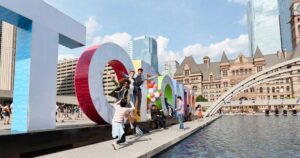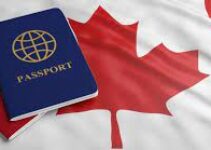Great Places to Visit in Toronto Canada

Toronto’s sights delineate various features of the city, yet not the slightest bit do they take shape its personality. The city stays murky, too huge and various to take into account a characterizing character and this adds a tempting demeanor of fervor and unconventionality to the spot. Nor is its format unsurprising: Toronto might have advanced from a lakeside settlement, yet its development has been irregular and generally impromptu, bringing about a cityscape that can appear to be an especially arbitrary blend of the old and the new. This clear disorder, when joined with the city’s moist summers, implies most guests invest their energy bouncing from one sight to another on the travel lines as opposed to strolling. However, in the event that you’ve the time and assurance to get under the skin of the city, take to your feet and Toronto will gradually uncover itself.
Brief history
Arranged on the chunk of land isolating Lake Ontario and Georgian Bay, Toronto was on one of the early portage courses into the inside, its name taken from the Huron for “spot of meeting”. The main European to visit the locale was the French traveler Étienne Brûlé in 1615, yet it was only after the center of the eighteenth century that the French put forth a genuine attempt to control Lake Ontario with the improvement of a straightforward settlement and barricade, Fort Rouillé. The British pushed the French from the northern shore of Lake Ontario in 1759, however at that point decided to disregard the site for right around forty years until the appearance of many United Empire Loyalists in the result of the American Revolution.
In 1791 the British partitioned their leftover American domains into two, Upper and Lower Canada. The main capital of Upper Canada was Niagara-on-the-Lake, yet this was too close to the American line for solace and the territory’s new lieutenant-lead representative, John Graves Simcoe, moved his organization to the general security of Toronto in 1793, calling the new settlement York. Simcoe had fantastic old style dreams of pilgrim settlement, however was exasperated by the states of boondocks life, taking note of “the city’s site was better determined for a frog lake … than for the home of people”. Nicknamed “Sloppy York”, the capital was minimal in excess of a town when, in 1812, the Americans went after and consumed its primary structures.
See Also: Benefits of Canadian Citizenship for Africans
The Family Compact – and William Lyon Mackenzie
In the mid nineteenth century, compelling financial and political power lay in the possession of an anglophile government initiated the Family Compact by the extreme polemicists of the day. The Compact’s most vociferous rival was an extreme Scot, William Lyon Mackenzie, who declared his perspectives both in his paper, the Colonial Advocate, and as an individual from the authoritative gathering. Mackenzie turned into the primary city chairman of Toronto, as the town was renamed in 1834, yet the revolutionaries were crushed in the decisions two years after the fact and a baffled Mackenzie floated towards outfitted revolt. In 1837, he arranged an ineffectively coordinated insurgence, during which two or three hundred ranchers walked down the primary drag, Yonge Street, battled a few pitiful engagements and afterward liquefied away. Mackenzie escaped across the line and two of different instigators were executed, yet the British parliament, aware of comparative occasions that prompted the American Revolution, moved to change Upper Canada’s organization as opposed to taking responses. In 1841, they conceded Canada mindful government, rejoining the two territories in a free confederation, prefiguring the last association of 1867 when Upper Canada was redesignated Ontario.
Toronto the Good
Before the finish of the nineteenth century, Toronto had turned into a significant assembling place overwhelmed by a moderate commercial tip top, which was really faithful to the British interest and kept a solid Protestant custom. This tip top was supported by the average Orange Lodges, whose traditionalist impact was a critical component of metropolitan legislative issues, inciting a meeting Charles Dickens to whine about the city’s “raging Toryism”. Different analysts were similarly basic, alluding to Toronto at some time as “Hogtown” and – with in excess of a cut of incongruity – “Toronto the Good”. All things considered, these equivalent Protestants were energetic about government funded schooling, very much like the Methodist-inclining working classes, who initiated social change developments, chiefly testimonial and restraint. The features, be that as it may, stayed a long way from charming – well into the 20th century Sunday was safeguarded as a “day off” and Eaton’s retail chain attracted its drapes to forestall Sabbath window-shopping. For sure, for all its capital status, the city was strikingly common by examination with Montréal until well into the 1950s, while the launch of the St Lawrence Seaway gave the spot something of a shock and the primary rush of non-white migrants started to change the city’s coloring. To be sure, Toronto today is maybe one of the world’s most assorted urban communities – in excess of 130 dialects and lingos swarm the airstream here, and a big part of Toronto’s inhabitants were brought into the world external Canada.
Present day Toronto
During the 1960s, the economy detonated, and the city’s appearance was changed by the development of a progression of powerful, futuristic high rises. This willy nilly advancement was additionally supported by the difficulties in Québec, where the uproar for fair treatment by the francophones incited a significant number of Montréal’s anglophone-ruled monetary establishments and enormous organizations to move to Toronto. From that point forward, Toronto’s economy has followed the patterns of blast and conservation normal to the remainder of the nation, yet politically Ontario took a go to one side during the 1990s with the appointment of the Progressive Conservatives drove by Mike Harris. Nothing while perhaps not tough, Harris pushed through a significant administrative rearrangement, consolidating the city of Toronto with its encompassing rural areas to make the “Uber City” of today. The change was profoundly disagreeable in Toronto itself, however Harris actually figured out how to get himself reappointed in 2000 with the enormous scope backing of unassuming community and rural Ontario. In 2003, Ontario got back to the political focus, shooting the Progressive Conservatives for the Liberals, proclaiming a move towards more moderate, consensual legislative issues.
Whenever Independent Rob Ford was chosen in 2010, that ideal flew through the window. While he ran on a foundation of financial obligation, he was before long up to speed in an irreconcilable situation embarrassment, and others concerning his utilization of liquor and medications. The discussions arrived at a peak in a web video wherein, apparently high, he owned up to smoking rocks. He at first wouldn’t venture down, however a stretch in recovery and a growth conclusion constrained him to pull out, and things have been a touch more steady since, with the appointment of John Tory in 2014 and the effective facilitating of the Pan American Games in summer 2015.
Eating and drinking
Toronto – and particularly the regions around King St West, Queen St West and West Queen West – essentially hurls with bistros and cafés, everything from brilliant and costly planner spots to casual area joints. Probably the best stress their utilization of Canadian fixings – fish and wild game, especially – however there’s no genuinely unmistakable neighborhood cooking in essence. Costs range from upwards of $60 for a feast at fancier eateries, to clearance room bistros where a respectable measured tidbit or sandwich works out at only a couple of dollars. Most of spots fall some place in the middle – a $35 greenback for each individual for a two-course feast, barring drinks.
A significant number of Toronto’s customary bars are crude but effective spots that closely resemble brew lobbies. Without a doubt, until the 1980s, it was normal for most city bars to have one entry for men joined by ladies, the other for men just, and, surprisingly, today a considerable lot of them remain solidly authentic. Others – and these are the pick – include a wide scope of “create” lagers from quite a few little and emanate bottling works, or focus on unrecorded music, or have transformed into clubs. Virtually all serve (bar) food of some sort or other.
Nightlife and amusement
The city that gave us The Weekend, Fucked Up and Rush keeps on displaying a thriving unrecorded music scene both for enormous name and anticipated groups and specialists, and jazz is very much addressed as well. Toronto’s club scene is additionally lively, while possibly not actually historic, however there’s all that could possibly be needed to push anybody along for days (and evenings) on end. For postings, counsel NOW (w nowtoronto.com), a free week after week magazine generally accessible in and out of town. Concerning the performing expressions, Toronto supports a wide-running project of theater, show, artful dance and old style music. Its specific strength is its theater scene, the third-biggest in the English-talking world, after London and New York. For film, Toronto’s standard films show Hollywood deliveries before they arrive at Europe and the city has an amazing craftsmanship house film – as befits a city that has what is regularly viewed as the world’s best film celebration, the eminent Toronto International Film Festival.
Suburbia
The satellite rural areas and modern regions that make up the vast majority of the GTA (The Greater Toronto Area) are of minimal general allure, a line of shapeless settlements rambling over a to a great extent level and troubling scene, which reaches out from Oshawa in the east to Mississauga and Burlington in the west and north towards Barrie. By the by, suburbia are home to a few notoriety attractions, most remarkably the Ontario Science Center, which features many intuitive science shows, and the Toronto Zoo.
See Also: 10 Best Community Colleges In Canada
Toronto’s driving celebrations
The city is continuously putting something on, from lager celebrations to a Caribbean amusement park to a festival of ice and winter; visit wseetorontonow.com for a full rundown. The Toronto International Film Festival or TIFF (w tiff.net) is one of the most regarded film celebrations on the planet, laid out in 1976. North of a week-and-a-half in September, the festival generally includes near 400 movies, and lines to get into them can be fearsome. Single, impromptu tickets are accessible from the TIFF box workplaces (or as rush tickets preceding screenings), yet ordinary TIFF participants generally purchase books of tickets ahead of time or choose one of a few passes, which can be bought from the TIFF site. In all cases, book well ahead. In June, there’s the exceptional Toronto Jazz Festival (w tojazz.com), which generally covers with the extended Gay and Lesbian Pride (w pridetoronto.com), that finishes in an incredible Pride Day Parade with 1,000,000 observers. The Fringe Festival (wfringetoronto.com) toward the beginning of July is additionally extraordinary tomfoolery; in excess of 150 modest creations (incorporating plays, dance, elective musicals and busking) occur all around the city, all around.
Toronto’s areas
One of Toronto’s most striking highlights is its division into unmistakable areas, a considerable lot of them in light of the occupants’ ethnic beginning, others characterized by their sexual direction or for sure pay. Bilingual road signs recognize a portion of these areas, however compositionally they are regularly vague. The accompanying once-over will assist you with taking full advantage of the city’s segment mosaic, whether you need to shop, eat or simply take in the environment.
The Beaches
South of Queen Street East among Woodbine and Victoria Park Ave. A prosperous and especially engaging region with stylish shops, verdant roads and a sandy ocean side managed by a famous promenade.
Cabbagetown
East of Jarvis and generally limited by Gerrard Street East on its south side, Wellesley toward the north and the Don River toward the east, it’s prominent for its trim Victorian lodging. Its name comes from the locale’s nineteenth-century workers, whose little front nurseries were loaded up with cabbages.
Chinatown
Spreads west along Dundas Street West from Beverley and afterward north up Spadina to College. This part is packed with occupied cafés and stores offering anything from porcelain and jade to spices and cured ocean growth.
The Gay Village
The Village’s plenty of bars, cafés and bookshops transmit out from the crossing point of Church and Wellesley roads. Stuck to the gunnels during Toronto Pride held somewhat recently of June.
Kensington Market
Only north of Dundas among Spadina and Augusta. Probable the most ethnically assorted area of town, joining Portuguese, West Indian and Jewish Canadians, who load the roads with a meander aimlessly of little shops, bistros and outdoors slows down.
Little Italy
The supposed Corso Italia, which runs along College among Bathurst and Ossington, is probably Toronto’s most energetic area, with a noisy group of good eateries and bars.
Little Portugal
A swarmed, essential region loaded with shops and local food joints, zeroed in on Dundas Street West from Ossington to Lansdowne Ave.
Sovereign West
Sovereign Street West, among University and Spadina, was once the grooviest area of town, however rising rents have since a long time ago pushed its group of super cool Torontonians further west to what exactly is frequently called “West Queen West”, running west from Strachan Street to Dufferin. West Queen West is the city’s star turn, with extraordinary bars, cafés and shops.
Yorkville
Simply above Bloor between Bay Street and Avenue Road, Yorkville was “elective” during the 1960s, with customary appearances by the main lights of the nonconformity like Gordon Lightfoot and Joni Mitchell. Today, the elective jive is a distant memory, and the region holds a portion of Toronto’s most flashy clothing shops and craftsmanship displays.
The waterfront and the Toronto Islands
There is a lot to appreciate on the north shore of Lake Ontario, notwithstanding its detachment of condo tower blocks and the substantial forehead of the Gardiner Expressway. Pathways and cycling trails currently push along a fair cut of the waterfront and the Harbourfront Center offers an all year timetable of exercises. Stunningly better are the Toronto Islands, whose windy quietness draws in large numbers of city-inhabitants during the city’s moist summers. It just requires fifteen minutes to contact them by civil ship (see Toronto’s driving celebrations), however the differentiation between the city and the islands could scarcely be more checked, not least in light of the fact that the islands are essentially sans vehicle.
See Also: How to Maximize Your Time at Work
Toronto Islands
Initially a shoal promontory, the Toronto Islands, which curve around the city’s harbor, were cut uncontrolled from the central area by a fierce tempest in 1858. First utilized as a mid year retreat by the Mississauga Nation, the islands went through different manifestations during the 20th century: they once facilitated a baseball arena, where slugger Babe Ruth hit his first expert grand slam, saw funfairs highlighting ponies plunging from the wharf, and, surprisingly, filled in as a preparation base for the Norwegian Air Force during World War II. Today, this archipelago, generally 6km long and totalling around 3.2 square kilometers, appears universes from the clamor of downtown, an ideal spot to unwind and loosen up – and where guests’ vehicles are restricted; numerous local people use wheeled carts or golf carriages to move their tackle, while others walk or cycle.


